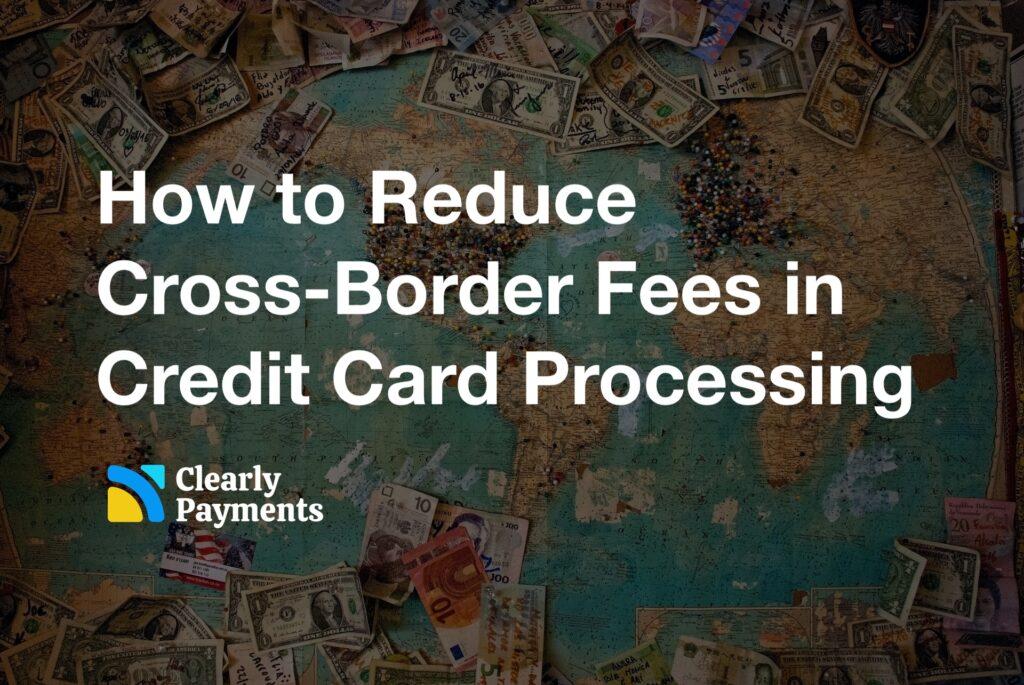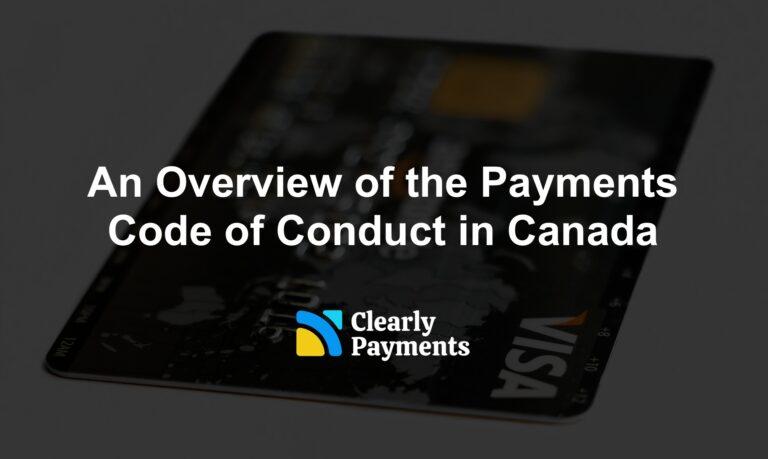In an increasingly interconnected world, online shopping has transcended borders, opening up new avenues for businesses to reach global markets. While this globalization presents lucrative opportunities, it also ushers in a complex set of challenges, particularly cross-border credit card processing fees. For merchants, understanding and effectively managing these fees is paramount to maintaining profitability and competitiveness in the international marketplace.
As we go into this topic, it’s good to recognize the scale and significance of cross-border transactions. In 2022, global eCommerce sales were $5.7 trillion, with projections indicating a continuous upward trajectory to over $8 trillion by 2026. This shift towards online shopping has led to a surge in cross-border transactions, making it imperative for merchants to navigate the intricacies of credit card processing fees.
To put these numbers into perspective, consider that nearly 47% of U.S. and Canadian consumers purchased products from international retailers in 2022, according to a report by eMarketer. This statistic highlights the burgeoning cross-border e-commerce landscape, where consumers are increasingly comfortable shopping from merchants located across oceans and continents.
Cross-border credit card processing fees are complex and can eat into a merchant’s profits. These fees, comprising international interchange fees, currency conversion charges, and cross-border transaction fees, can add up quickly. This article aims to help merchants understand and reduce cross-border fees.
What are credit card cross border fees for merchants?
Prior to the year 2005, the concept of cross-border fees was virtually non-existent in the world of card payments. Instead, card processing companies primarily levied currency conversion charges to offset the expenses incurred during international transactions. In response to some merchants discovering ways to circumvent these conversion fees – often by utilizing banks supporting multi-currency processing or establishing a presence in various countries – card companies implemented cross-border fees. These fees were designed to encompass all international card payments, irrespective of whether a currency conversion was necessary.
When a customer makes a purchase of your products or services using a card, you, as the merchant, incur a card processing fee. The lion’s share of this fee, which varies depending on the type of card used, constitutes what is known as the interchange fee.
However, when a customer uses a card issued in a different country or region compared to where the payment is processed, an additional charge in the form of a cross-border interchange fee may be applied on top of the standard interchange fee.
For instance, let’s consider a scenario in which a U.S.-based online business sells a $100 product to a customer in Canada, who pays with a Visa card issued in Canada. If this transaction is processed within the United States, the business may be subject to an additional fee on that transaction.
How much are cross border credit card fees for merchants?
Cross-border credit card fees for merchants can vary widely based on factors such as the payment processor used, the type of card involved, the specific countries involved in the transaction, and the terms of the merchant’s agreement.
To provide you with a general sense of these fees, here are some rough examples:
Assessment Fees: Assessment fees imposed by card networks like Visa and Mastercard are usually around 0.6% to 1.4% of the transaction amount.
Currency Conversion Fees: Currency conversion fees typically range from 1% to 3% of the transaction amount. This fee applies when the transaction involves converting the customer’s currency to the merchant’s currency.
- Cross-Border Transaction Fees: Some payment processors charge an additional fee specifically for cross-border transactions. This fee can range from 0.5% to 1.5%.
Some payment processors may have extra fees that they create for international transactions. You should make sure you look closely at their fees.
Ways to reduce your cross border fees
Here are a few steps that merchants can take to reduce cross border credit card processing fees.
Negotiate with your payment processor or move to a cheaper one
One effective strategy for merchants looking to reduce cross-border credit card processing fees is to negotiate with their existing payment processor or explore the possibility of switching to a more cost-effective one.
Engaging in negotiations with your current payment processor can often yield favorable results, as they may be willing to offer reduced fees or more competitive rates, especially if your business volume has grown significantly.
Evaluating alternative payment processors, such as TCM, can also prove beneficial, as they may provide more budget-friendly solutions to optimize your payment processing strategy and help you effectively manage cross-border fees. Making an informed decision regarding your payment processor can be a pivotal step in achieving substantial savings and enhancing your international payment processing efficiency.
Look into flat-rate pricing models
Some payment processors offer flat-rate pricing models that simplify fee structures. With a flat-rate plan, you pay a consistent percentage fee per transaction, regardless of the card type or issuer. Read more about flat rate compared to interchange plus pricing in payment processing.
This model can be cost-effective for smaller businesses with low transaction volumes. You will have to be cautious because moving to a flat rate model can increase your effective rate in payment processing.
Encourage debit card use or alternative payment methods
Debit card transactions often come with lower interchange fees compared to credit cards. Encourage customers to use debit cards by offering discounts or incentives for debit transactions. Additionally, educate your staff to ask customers if they’d like to use a debit card for their purchase.
Explore alternative payment methods, such as mobile wallets, digital currencies, or ACH and EFT transfers. These options may have lower processing costs compared to traditional credit card payments.
Set minimum transaction amounts
In the pursuit of minimizing cross-border credit card processing fees, merchants often consider implementing minimum purchase amounts as a strategic option. However, this approach requires a thorough understanding of the relevant card network regulations and local laws to ensure compliance. Major card networks like Visa and Mastercard generally discourage minimum purchase requirements but may permit surcharges within specified limits. Merchants should diligently research these rules while also being aware of regional laws and regulations governing this practice.
To effectively reduce cross-border fees, transparency and consistency remain paramount. If a minimum purchase threshold is set, it must be clearly communicated to customers, both at the point of sale and through online channels, such as the business website and transaction receipts. It’s equally important to regularly assess the impact of this policy on customer experience and explore alternative strategies. For instance, businesses can negotiate for lower processing fees with their payment processors or promote the use of alternative payment methods. Striking a balance between operational cost savings and maintaining customer convenience and satisfaction is key to successfully navigating cross-border credit card processing fees while considering minimum purchase requirements.
Implement a surcharge program
In some regions and under specific regulations, merchants may be allowed to implement surcharges for credit card transactions. This allows you to pass on the processing fees to the customer, reducing your expenses.
In more detail, a surcharge program for merchants refers to a practice where businesses add an extra fee or surcharge to customer transactions when they choose to pay with a credit card. This fee is intended to cover the cost of credit card processing fees imposed by card networks like Visa, Mastercard, American Express, or Discover. In essence, it allows merchants to pass on some or all of the costs associated with credit card transactions to the customers who choose to use credit cards for payment.
Set up a corporation in the country with the highest number of customers
At a certain juncture, your business might find itself catering to an international clientele, perhaps even surpassing your domestic sales. In such circumstances, it could be advantageous to contemplate the establishment of a local business branch in a different geographical region. This strategic move grants you the opportunity to align with a merchant acquiring bank situated in the same country as the card issuer of your international customers.
For instance, let’s envision your business being registered in USA while you extensively serve customers in Canada. In this scenario, you might opt to register a local business branch within Canada, effectively sidestepping cross-border fees. This essentially equips your business with acquiring services in both USA and Canada.
It’s crucial to exercise caution when considering the registration of a foreign business branch. This endeavor is not without its complexities and potential challenges. Beyond the allure of potential cost savings, there are additional tax considerations, administrative overheads, and the necessity to adhere to governing laws.




